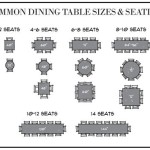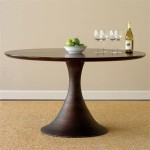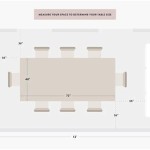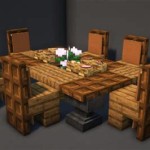How To Use A Plastic Tablecloth As Backdrop
Utilizing a plastic tablecloth as a backdrop presents a cost-effective and readily accessible solution for photography, videography, and event decoration. Plastic tablecloths are lightweight, easily obtained in various colors and sizes, and offer a quick and simple background alternative to more expensive or complex options. The effectiveness of this method hinges on proper selection, preparation, and implementation. This article will detail the process of successfully using a plastic tablecloth as a backdrop, covering key considerations and techniques for achieving optimal results.
Selecting the Appropriate Tablecloth
The initial step involves selecting a plastic tablecloth that meets the specific needs of the project. Several factors play a crucial role in this decision, including color, size, texture, and thickness. The intended application will largely dictate these choices. For instance, a photographer seeking a seamless background for portraiture will require a different type of tablecloth compared to someone decorating for a casual party.
Color is a fundamental consideration. Solid colors are generally preferred for photography and videography, as patterned or textured tablecloths can introduce unwanted visual noise. White, black, and gray are versatile choices, offering neutral backgrounds that can be manipulated with lighting. Bright or pastel colors can be used for themed events or when a specific aesthetic is desired. However, it is crucial to consider how the chosen color interacts with the subject being photographed or filmed. Color casts can occur, potentially altering the perceived colors of the subject. Therefore, testing the color under the planned lighting conditions is recommended before committing to a particular shade.
Size matters significantly. The tablecloth must be large enough to cover the desired area completely, with extra material to allow for secure attachment and draping. For photography, the backdrop should extend beyond the edges of the frame, minimizing the risk of visible edges or distractions. Measuring the area where the backdrop will be used is essential to determine the required dimensions. It is generally advisable to err on the side of caution and purchase a larger tablecloth than initially estimated. Excess material can always be trimmed or folded, whereas a tablecloth that is too small will be unusable.
Texture and thickness are closely related. Plastic tablecloths vary in their texture, ranging from smooth and glossy to slightly textured or matte. Glossy tablecloths can reflect light, creating unwanted glare or highlights. Matte tablecloths, on the other hand, tend to absorb light, resulting in a flatter, less reflective surface. The optimal choice depends on the lighting setup and the desired effect. Thicker tablecloths are generally more durable and less prone to tearing or wrinkling. They also tend to be less translucent, preventing light from passing through and creating unwanted shadows or hotspots. Thin tablecloths may require multiple layers to achieve adequate opacity.
Consider the specific type of plastic as well. Polyethylene tablecloths are common and inexpensive, while vinyl tablecloths offer greater durability and water resistance. The choice between these options will depend on the intended use and the desired level of resilience. For example, if the backdrop is likely to be exposed to spills or moisture, a vinyl tablecloth would be a more practical choice.
Preparing the Tablecloth for Use
Proper preparation is crucial to ensure a smooth and professional-looking backdrop. This involves addressing wrinkles, securing the tablecloth, and managing any imperfections that may be present. Neglecting these steps can result in a visually distracting and unprofessional final product.
Wrinkles are a common issue with plastic tablecloths, particularly those that have been folded or stored for an extended period. Several methods can be used to minimize wrinkles. One option is to hang the tablecloth for several days or weeks prior to use, allowing gravity to naturally smooth out the creases. Another approach is to use a handheld steamer to gently remove wrinkles. However, caution is advised when using heat on plastic, as excessive heat can damage or melt the material. Always test the steamer on an inconspicuous area of the tablecloth first to ensure that it does not cause any adverse effects. Alternatively, a low-heat iron can be used, but only if a protective cloth is placed between the iron and the tablecloth. Direct contact with the iron can easily melt the plastic.
Securing the tablecloth is essential to prevent it from moving or sagging during use. Several methods can be employed, depending on the available support structure. Clamps are a popular option for attaching the tablecloth to a backdrop stand, wall, or other sturdy surface. Spring clamps or A-clamps are particularly useful for this purpose. Tape can also be used, but it is important to choose a tape that is strong enough to hold the tablecloth in place without damaging the surface to which it is being attached. Painter's tape is often a good choice, as it provides adequate adhesion while being relatively easy to remove without leaving residue. For a more permanent solution, staples or tacks can be used, but this may damage the tablecloth and the underlying surface.
Addressing imperfections is a final step in the preparation process. This involves inspecting the tablecloth for any tears, holes, or stains and taking steps to minimize their visibility. Small tears can often be repaired with clear tape or fabric glue. Stains may be more difficult to remove, but gentle cleaning with a mild detergent and water may be effective. If imperfections are unavoidable, consider positioning the subject in a way that minimizes their visibility or using post-processing techniques to remove them from the final image or video.
Implementing the Backdrop and Troubleshooting Issues
Implementing the plastic tablecloth as a backdrop requires careful attention to detail and an understanding of potential issues that may arise. The goal is to create a seamless and visually appealing background that enhances the subject being photographed, filmed, or displayed.
When hanging the tablecloth, ensure that it is evenly distributed and free of wrinkles or creases. Use clamps or tape to secure the top edge first, then gradually work your way down, smoothing out the material as you go. Pay particular attention to the corners and edges, ensuring that they are securely attached and free of gaps. If using a backdrop stand, adjust the height and width to accommodate the size of the tablecloth. If attaching the tablecloth to a wall, use a level to ensure that it is straight and even.
Lighting is a critical factor in achieving optimal results. Proper lighting can minimize imperfections and enhance the overall appearance of the backdrop. Avoid direct sunlight, as it can create harsh shadows and hotspots. Diffused lighting is generally preferred, as it provides a more even and flattering illumination. Experiment with different lighting angles and intensities to find the optimal setup for your subject. Consider using reflectors or diffusers to further control the light and minimize shadows. If using artificial lighting, ensure that the color temperature is consistent and that it does not clash with the color of the tablecloth.
Common issues that may arise include wrinkles, glare, and transparency. Wrinkles can be addressed by re-steaming or ironing the tablecloth, as described earlier. Glare can be minimized by using a matte tablecloth or by adjusting the lighting to reduce reflections. Transparency can be overcome by using multiple layers of tablecloth or by placing a dark-colored fabric behind the tablecloth to block light from passing through. Another solution involves adjusting the distance between the light source, the backdrop, and the subject. Moving the subject further away from the backdrop can help to blur any imperfections or reduce the visibility of shadows.
Post-processing techniques can also be used to address any remaining issues. Software such as Adobe Photoshop or GIMP can be used to remove wrinkles, blemishes, or other imperfections from the final image or video. Color correction tools can be used to adjust the color balance and minimize color casts. However, it is important to use post-processing techniques judiciously, as excessive editing can result in an unnatural or artificial-looking final product.
Ultimately, effectively utilizing a plastic tablecloth as a backdrop requires a combination of careful planning, diligent preparation, and creative problem-solving. By paying attention to the details and employing the techniques described above, it is possible to achieve professional-looking results without breaking the bank.

Photo Booth Backdrop Makoodle

The Easiest Diy Fringe Tablecloth Party Backdrop Ever

D I Y Photo Booth Backdrop For 10 The Thinking Closet

Tablecloth Backdrop Diy 4 Easy Steps Mistakes To Avoid Tablecoversnow Com

Backdrop Plastic Table Cloth Ideas

Tablecloth Backdrop Diy 4 Easy Steps Mistakes To Avoid Tablecoversnow Com

Diy Pinata Fringe Photo Backdrop A Kailo Chic Life

D I Y Photo Booth Backdrop For 10 The Thinking Closet

Diy Pinata Fringe Photo Backdrop A Kailo Chic Life

Photo Booth Backdrop Makoodle
Related Posts








